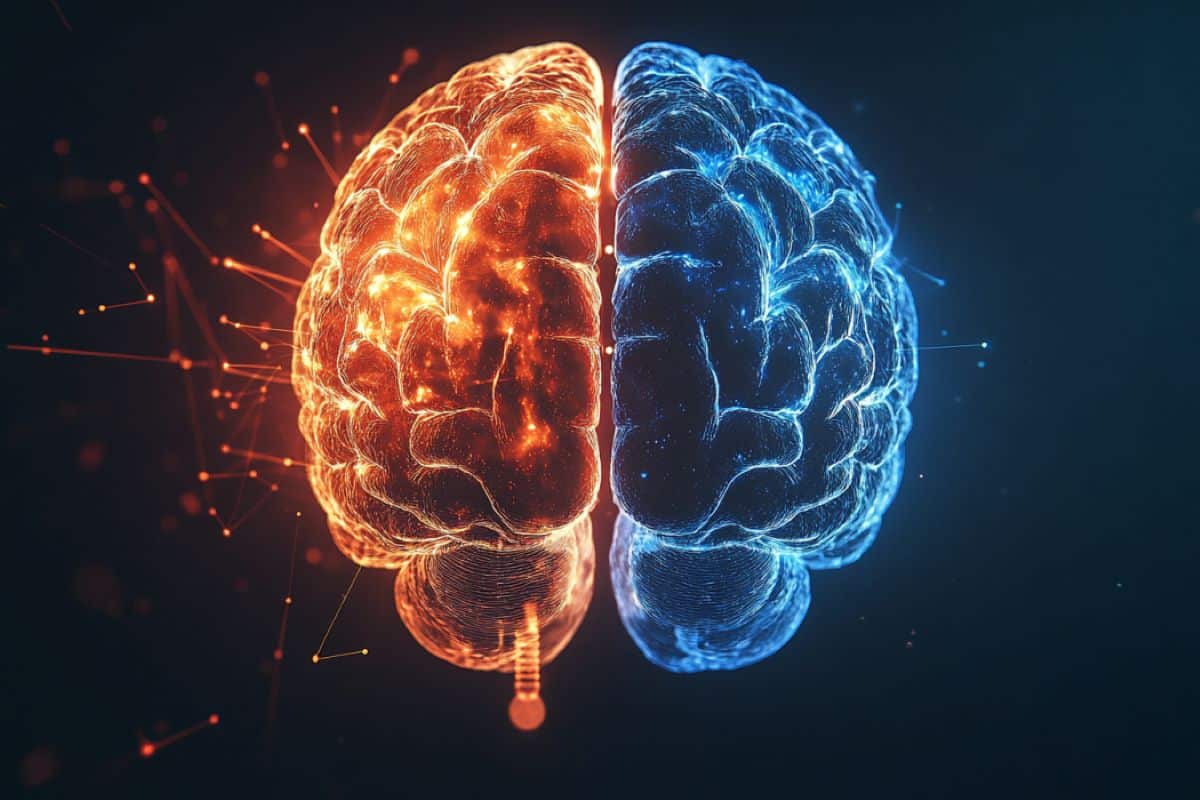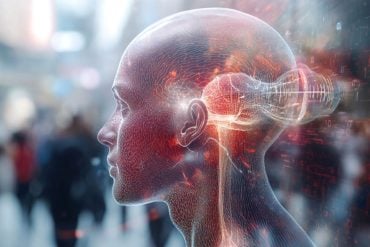Summary: A new study has shown that unilateral deep brain stimulation (DBS) on the right side of the brain improves motor symptoms in Parkinson’s patients without causing significant declines in verbal fluency. Researchers found that DBS on the left hemisphere led to more noticeable declines in word retrieval and generation.
The results suggest that unilateral DBS may be a safer option compared to the traditional bilateral approach, which affects both brain hemispheres. This discovery could lead to more targeted treatments for Parkinson’s patients while preserving cognitive functions like speech.
Key Facts:
- Right-side DBS improves motor symptoms without harming verbal fluency.
- Left-side DBS is associated with declines in verbal fluency and response inhibition.
- Unilateral DBS may offer a safer alternative to bilateral stimulation for Parkinson’s patients.
Source: University of Alabama at Birmingham
Deep brain stimulation is an effective treatment for motor symptoms in patients with movement disorders such as Parkinson’s disease. While ultimately regarded as safe, DBS can yield noticeable declines in verbal fluency, which affects how fast words can be retrieved and generated.
Researchers at the University of Alabama at Birmingham studied the impact of unilateral DBS on verbal fluency in Parkinson’s patients. Findings showed that electrode implants in the left hemisphere of the brain appeared to be the primary cause of verbal fluency declines in patients who had undergone DBS surgery.

The study was part of the National Institutes of Health’s Brain Research through Advancing Innovative Neurotechnologies® Initiative, or The BRAIN Initiative®, and results were published in the Annals of Neurology.
“Patients who received right-sided DBS implants actually showed mild improvements in verbal fluency function over the time interval of the study,” said Victor Del Bene, Ph.D., a neuropsychologist in the UAB Department of Neurology and lead author.
Traditionally, DBS involves placing tiny wire electrodes bilaterally, on both sides of the brain, in patients with Parkinson’s disease. However, motor symptoms from Parkinson’s disease are asymmetric at onset, which means they affect one side of the brain more than the other.
Surgeons at UAB Medicine have used unilateral stimulation on the most affected side of the brain as a less invasive, alternative option for DBS therapy.
“We found that unilateral intervention substantially improves motor symptoms for years, with the option to proceed with DBS on the opposite side of the brain if and when it is needed,” said Harrison Walker, M.D., professor in the UAB Department of Neurology. “Despite this, little is known about how unilateral DBS impacts verbal fluency and other domains of cognitive function in these patients.”
The study results suggest that, rather than stimulating both sides of the brain using DBS, unilateral right DBS may avoid DBS-related declines in verbal fluency and response inhibition in patients with movement disorders like Parkinson’s disease.
Additionally, the left hemisphere stimulation was associated with greater declines in response inhibition, though there appeared to be no DBS-related hemisphere differences in terms of immediate or delayed recall of verbal information.
“We hope these results may convince neurologists and neurosurgeons at other medical centers that unilateral DBS on the most affected side of the brain is a viable therapeutic option, with potential advantages over the more invasive bilateral option for therapy,” Walker said.
“In particular, unilateral right hemisphere stimulation might spare occasional declines in some aspects of cognitive function that accompany the bilateral DBS intervention.”
The results of this study are from the NIH BRAIN Initiative grant awarded to UAB in 2016. The team included researchers from the UAB Departments of Neurology, Neurosurgery and Physical Therapy, as well as the School of Public Health. The researchers plan to expand on these results with a new BRAIN Initiative grant obtained by Walker and his team.
Funding: The BRAIN Initiative® is a registered trademark of the U.S. Department of Health and Human Services. The content is solely the responsibility of the authors and does not necessarily represent the official views of the National Institutes of Health. Research reported in this study was supported by the NIH BRAIN Initiative under award number (UH3-NS100553).
About this Parkinson’s disease and DBS research news
Author: Katherine Gaither
Source: University of Alabama at Birmingham
Contact: Katherine Gaither – University of Alabama at Birmingham
Image: The image is credited to Neuroscience News
Original Research: Open access.
“Differential Cognitive Effects of Unilateral Subthalamic Nucleus Deep Brain Stimulation for Parkinson’s Disease” by Victor Del Bene et al. Annals of Neurology
Abstract
Differential Cognitive Effects of Unilateral Subthalamic Nucleus Deep Brain Stimulation for Parkinson’s Disease
Objective
The aim of this study was to investigate the cognitive effects of unilateral directional versus ring subthalamic nucleus deep brain stimulation (STN DBS) in patients with advanced Parkinson’s disease.
Methods
We examined 31 participants who underwent unilateral STN DBS (left n = 17; right n = 14) as part of an National Institutes of Health (NIH)-sponsored randomized, double-blind, crossover study contrasting directional versus ring stimulation. All participants received unilateral DBS implants in the hemisphere more severely affected by motor parkinsonism. Measures of cognition included verbal fluency, auditory-verbal memory, and response inhibition. We used mixed linear models to contrast the effects of directional versus ring stimulation and implant hemisphere on longitudinal cognitive function.
Results
Crossover analyses showed no evidence for group-level changes in cognitive performance related to directional versus ring stimulation. Implant hemisphere, however, impacted cognition in several ways. Left STN participants had lower baseline verbal fluency than patients with right implants (t [20.66 = −2.50, p = 0.02]). Verbal fluency declined after left (p = 0.013) but increased after right STN DBS (p < 0.001), and response inhibition was faster following right STN DBS (p = 0.031). Regardless of hemisphere, delayed recall declined modestly over time versus baseline (p = 0.001), and immediate recall was unchanged.
Interpretation
Directional versus ring STN DBS did not differentially affect cognition. Similar to prior bilateral DBS studies, unilateral left stimulation worsened verbal fluency performance. In contrast, unilateral right STN surgery increased performance on verbal fluency and response inhibition tasks. Our findings raise the hypothesis that unilateral right STN DBS in selected patients with predominant right brain motor parkinsonism could mitigate declines in verbal fluency associated with the bilateral intervention.






